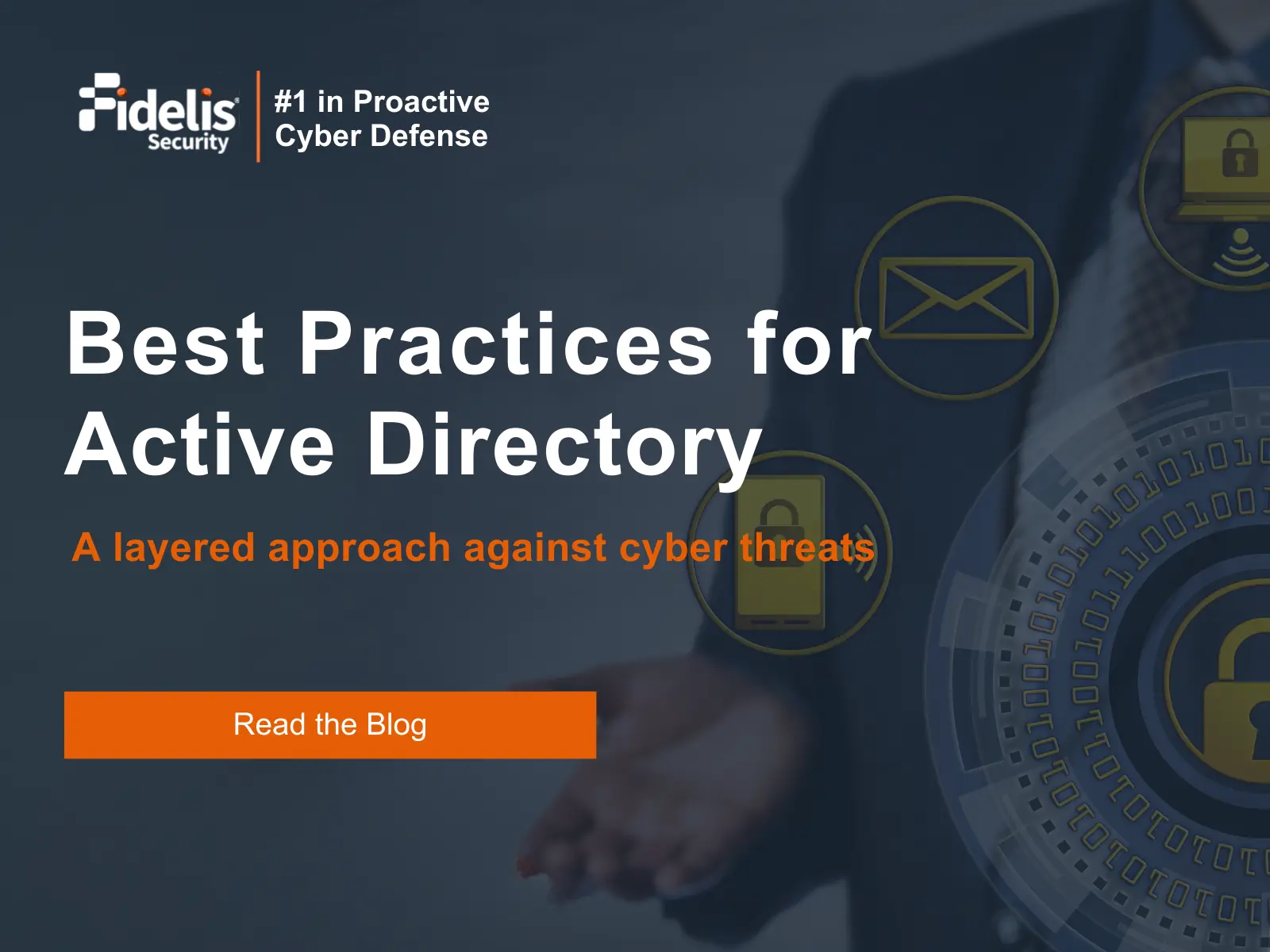Active Directory (AD) serves as the cornerstone of identity and entitlements management in over 90% of organizations, making it a critical component of their operational infrastructure. However, this centrality also makes Active Directory security a prime target for attackers looking to exploit vulnerabilities, leading to unauthorized access, privilege escalation, and malicious activities that pose significant AD risks.

Active Directory is the ideal starting point for adversaries to delve deep, move laterally, escalate privileges, and engage in malicious activities such as code execution, data exfiltration, account spoofing, and more. Protecting AD is a top priority for almost any organization, yet many traditional technologies fail to detect the warning signals of an impending attack.
To counter these threats, Fidelis Active Directory Intercept™ offers a comprehensive solution to mitigate these risks. It leverages a multi-layered approach that combines AD-aware network detection and response (NDR), integrated deception technology, and advanced log and event monitoring. This equips organizations with the necessary tools to defend against potential attacks and safeguard their vital Active Directory security.
Why Do Organizations Need Active Directory Intercept™?
With Fidelis Active Directory Intercept™, you gain complete visibility into AD objects, enabling in-depth analysis of resources and access paths. This technology provides a defense-in-depth approach to Active Directory that allows defenders to effectively identify, analyze, and block adversary movement with features like:
AD Threat Detection
- Powerful network sensors provide real-time traffic analysis to identify even subtle indicators of threats against Active Directory.
- AD log analysis monitors configurations to effectively identify and analyze adversary movements.
AD Attack Response
- Automated AD-aware deception capabilities lure adversaries away from high-value assets and provide defenders with high-confidence, context-rich alerts.
- MITRE ATT&CK framework mapping accelerates threat response and facilitates threat-informed decision making.
- Advanced forensic tools and automated playbooks and scripts give defenders the power to thwart AD attacks prior to impact.
AD Threat Prevention
- Continuous AD configuration monitoring improves security hygiene and closes security gaps before they become entry points for attackers.
How Fidelis Active Directory Intercept™ Works?
Network traffic analysis (NTA) is another crucial aspect of detecting and responding to Active Directory threats, and Fidelis Network®, a key component of Active Directory Intercept, offers game-changing threat detection and response capabilities. Utilizing advanced analytics, machine learning, and behavioral modeling, it identifies suspicious behavior and compromise indicators across the network.
Fidelis Active Threat Detection correlates activities with MITRE ATT&CK TTPs, providing valuable context for incident response and threat hunting. Fidelis Deep Session Inspection™ enhances threat identification by analyzing nested and obfuscated files, uncovering hidden threats. The solution can also analyze encrypted traffic, both in-line and out-of-band, allowing detection of malicious activities within encrypted communications.
Active Directory Intercept provides contextual intelligence, enabling organizations to swiftly respond and prevent future attacks by understanding the extent of adversary presence.
Fidelis Active Directory Intercept™ offers comprehensive defense for complex environments by combining network traffic analysis, integrated deception, and AD monitoring. It can detect and prevent a variety of AD-related attacks, such as Active Directory reconnaissance, brute-force authentication attempts, Kerberoasting, password sniffing, and others.
The Power of Threat Intelligence and Continuous Improvement
Leveraging a range of threat intelligence feeds, Fidelis Active Directory Intercept™ effectively detects and responds to AD threats. Its intelligence continuously learns and adapts to Active Directory security requirements, building a baseline of normal behavior for identifying anomalies.
Mapping alerts to MITRE ATT&CK TTPs provides valuable context for threat-informed decisions. Organizations can enhance their AD security posture over time by leveraging insights gained from monitoring, detection, and response to improve access controls, authentication mechanisms, and overall defense layers.
With Active Directory Intercept, organizations gain the power and tools needed to effectively protect critical assets.
In Conclusion
Fidelis Active Directory Intercept™ is a powerful solution for enhancing AD security and mitigating potential threats. Its multi-layered defense approach, incorporating AD-aware network detection and response, integrated deception technology, and advanced log monitoring, empowers organizations to detect and respond to AD threats effectively.
By leveraging contextual intelligence, threat mapping to MITRE ATT&CK TTPs, and continuous improvement mechanisms, organizations can continually enhance their AD security posture. With Fidelis Active Directory Intercept™, organizations can confidently safeguard their critical AD infrastructure and protect against evolving cyber threats.



